Peterborough, Care of the Sick for 2000 Years
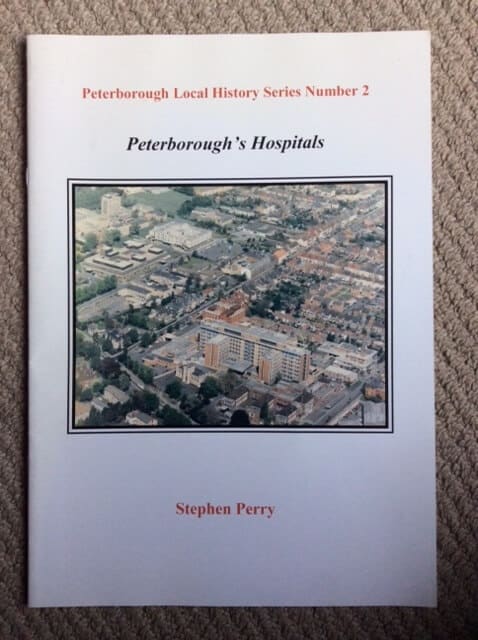
March has commenced true to form, producing some very wild, gusty, windy weather but this hadn’t deterred the members from attending the evenings meeting.
Stephen Perry one of our foundation members and Local Historian was to give a talk about the medical care and hospital provision to the people of Peterborough through the centuries. It promised to be a fascinating talk (despite the fact that Stephen seemed to be in need of medical care himself. A nasty winter virus had floored him earlier in the week)
You will note this report on Stephens talk is a little longer than other reports. I must admit to a biased interest in as I began working for the National health service back in late 1959.
- The first archived records of medical care in the Peterborough area was at the Longthorpe Roman Fort in between AD44 and AD 62.
- There are no more recorded evidence of medical provision for the area until The Peterborough Abbey was built in the 10th century. The Abbey Infirmary though the care at this time was primarily for the Abbey Monks.
- St. Leonard Hospital Founded around 1125AD and was a Leper hospital, to house lepers and undesirables. It was situated at the West end of Bright street under tie site of the Volunteer Fire-station. The name Spital was associated with the hospital hence the present day name of Spital Bridge over the railway.
- St Thomas the Martyr Hospital was founded in 1177AD and situated close to the City’s Cathedral Gate on what is now Cathedral Square.
- Moving on to the 18th century The Norman Cross French prisoner of War camp had two hospitals, one for prisoners and one for the military.
- At the beginning of the 19th century, the poor of the City were beginning to be considered. Access to medical care had been virtually non-existent. The Peterborough Public Dispensary was established in 1815. It was situated at the end of Cowgate.
- Then a year later, to accommodate the sick from the surrounding area a ‘Lodging house’ was established in Milton Street in 1819. Milton Street Lodging House
- The Union Workhouse with an Infirmary opened in 1837 saw the closure of the Milton Street Lodging house. The Workhouse quickly became unsuitable for the care of the sick and the standard of care was poor.
- A second house in Milton Street was purchased and the Infirmary and Dispensary moved from the Cowgate Public dispensary
- Moving on to 1856 Earl Fitzwilliam exchanged the house in Milton Street for the large house in Priestgate (Now the Peterborough Museum) This became The Peterborough Infirmary Until 1928
-
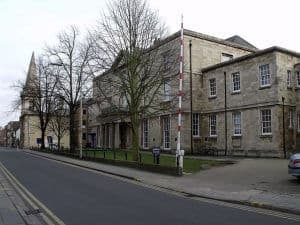
Museum in Priestgate formerly the Peterborough Infirmary
Between 1856 and 1928 several other building housing the sick were in use around Peterborough and the local area.
- In the 1860s a Fever Hospital was opened Trinity Street. This building eventually became the Slipper Baths.
- In 1878 there was a temporary Smallpox hospital in Eye and another on Newark Common
- In 1894 another Smallpox hospital was opened at Fengate. In 1970 this was demolished and buried under six feet of soil.
- In 1894 another Isolation Hospital was needed but wasn’t completed until 1900. Situated in Potters Way in Fengate this became Known as St Peters isolation Hospital
- Thorpe Lawn House situated in Thorpe Road was in use during and after the First World War for the rehabilitation of wounded men.
- Milton Hall and the Cathderal’s Bishops Palace was also in use as a Military hospital during the 1914-18 war.
- Peterborough’s Workhouse infirmary was replaced by a second Infirmary opened in the early 1920s. It became Known as St Johns. The Infirmary gave way to Maternity patient before 1947 then finally used to give bed for mentally ill patients.
- RAF Westwood opened in 1932 included a medical Facility for the Base until 1946
- Thorpe Hall a large home in extensive grounds became a Maternity hospital in 1943.
-
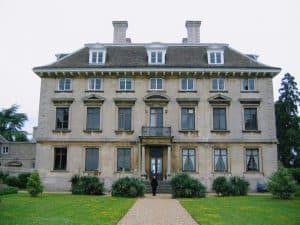
Thorpe Hall Attribution Zoe Martin
- The Gables another private home was also in use as a Maternity Home from 1947 and continued to be used by the NHS as unit for mentally ill patients until the new unit opened in the grounds of Peterborough City Hospital.
- By 1918 the Priestgate Infirmary was not fit for purpose as a hospital any more so the People of Peterborough donated Monet towards a new hospital. Opened in 1928 and named the Memorial Hospital this was the People of Peterborough’s war memorial to the soldiers killed and injured during the 1914-18 war often called the Great War.
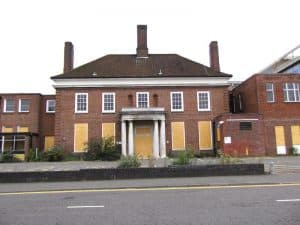
Photo, just prior to demolition Attribution – Jane King - By the late 1950s, the memorial was not large enough for the growing City another much larger high rise hospital was built alongside and attached to the Memorial Hospital. The Peterborough District Hospital is was opened in fazes from 1960 to 1968 but was also added to during the over the next 30 years.
- In 1971 The Purpose built Peterborough Maternity Unit was opened. This included a Special Care Baby unit
- In 1981 Fenland House was built. It was primary a Geriatric Hospital to care for the elderly who became sick but included an isolation unit and a rehabilitation unit.
- The District Hospital needed more beds so a second hospital was built and opened in 1988 Called Edith Cavell it had 198 beds and a 72-bed psychiatric unit.
- The private wing on the sixth floor of the District hospital was considered inappropriate to care for private paying patients so several Consultants and Surgeon came together to get the Private hospital. Opened in 1983 and known as the Fitzwilliam Hospital it was built on Fitzwilliam land in South Bretton. Note the sixth floor was taken over by the Military and Military medical personal complemented the hospital staff
- A second Private hospital was opened in 2005 for Spinal patients. This was simply called The Spinal Hospital
- At the end of the 1900s, the District Hospital was no longer fit for purpose. So after many false starts, a New hospital for the growing city was built. Opened in 2012 it was named the Peterborough City Hospital.
If you like me are fascinated by the history of Peterborough’s medical care then more information can be found in Stephen Perry’s booklet Peterborough Local History Series Number 2 – Peterborough’s Hospitals. Purchase price £3.00p
This can be obtained by emailing Stephen at stephenperry1947@gmail.com
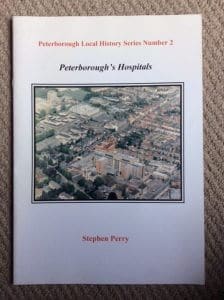
Other Hospital units in Peterborough not in Stephen’s book are
Sue Ryder Hospice Thorpe Hall was purchased from the City Council in 1986 by the Sue Ryder Foundation and was renovated and became a Sue Ryder Hospice for the terminally ill.
Connally House. During the 1970s increasing need for psychiatric care given to the mentally Ill saw a Prefabricated unit erected on the spare ground in front of the Maternity Unit. Connally House was in use until the new unit in the Edith Cavell hospital opened.
Lucille Van Geest Centre In the early 1980’s a large donation from The Van Geest family saw a Unit called the Lucille Van Geest Centre built. It was built on land to the rear of the Maternity Unit. It provided integrated physical and mental health services for adults and older people; specialist mental health and learning disability services for children and young people.

One Comment
Please can you tell me how to find pictures of St.Johns Hospital Peterborough in 1985. I was a nurse on top floor Warwick ward then